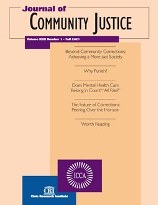Factors Related to Release Outcomes Among Canadian Federally Sentenced Offenders
Author: Jennie Thompson.; Lynn A. Stewart.; Trina K. Forrester.
Source: Volume 26, Number 04, Summer 2017 , pp.7-16(10)

< previous article |next article > |return to table of contents
Abstract:
The successful transition of offenders to the community is a priority for correctional agencies. This study identifies the factors associated with the first revocation of conditional release for any reason for four groups of Canadian federal offenders (aboriginal and non-aboriginal men, and aboriginal and non-aboriginal women) and the factors related to the first revocation for an offense for aboriginal and non-aboriginal men. Failure rates based on revocation for any reason varied across groups, with non-aboriginal women offenders having the lowest rates (24%) and aboriginal men having the highest rates (56%). Rates of revocation for an offense ranged from 4% to 12% across the groups, with both non-aboriginal men and women having lower rates than aboriginal offenders. Risk factors associated with outcomes differed across groups and differed depending on which outcome was examined. Understanding the impact of these factors can be useful in developing more effective, targeted community supervision strategies adapted to each group.Keywords: Returns to custody, recidivism, revocation of conditional release, release outcomes, community supervision, offender risk factors
Affiliations:
1: Correctional Service of Canada; 2: Correctional Service of Canada; 3: Correctional Service of Canada.